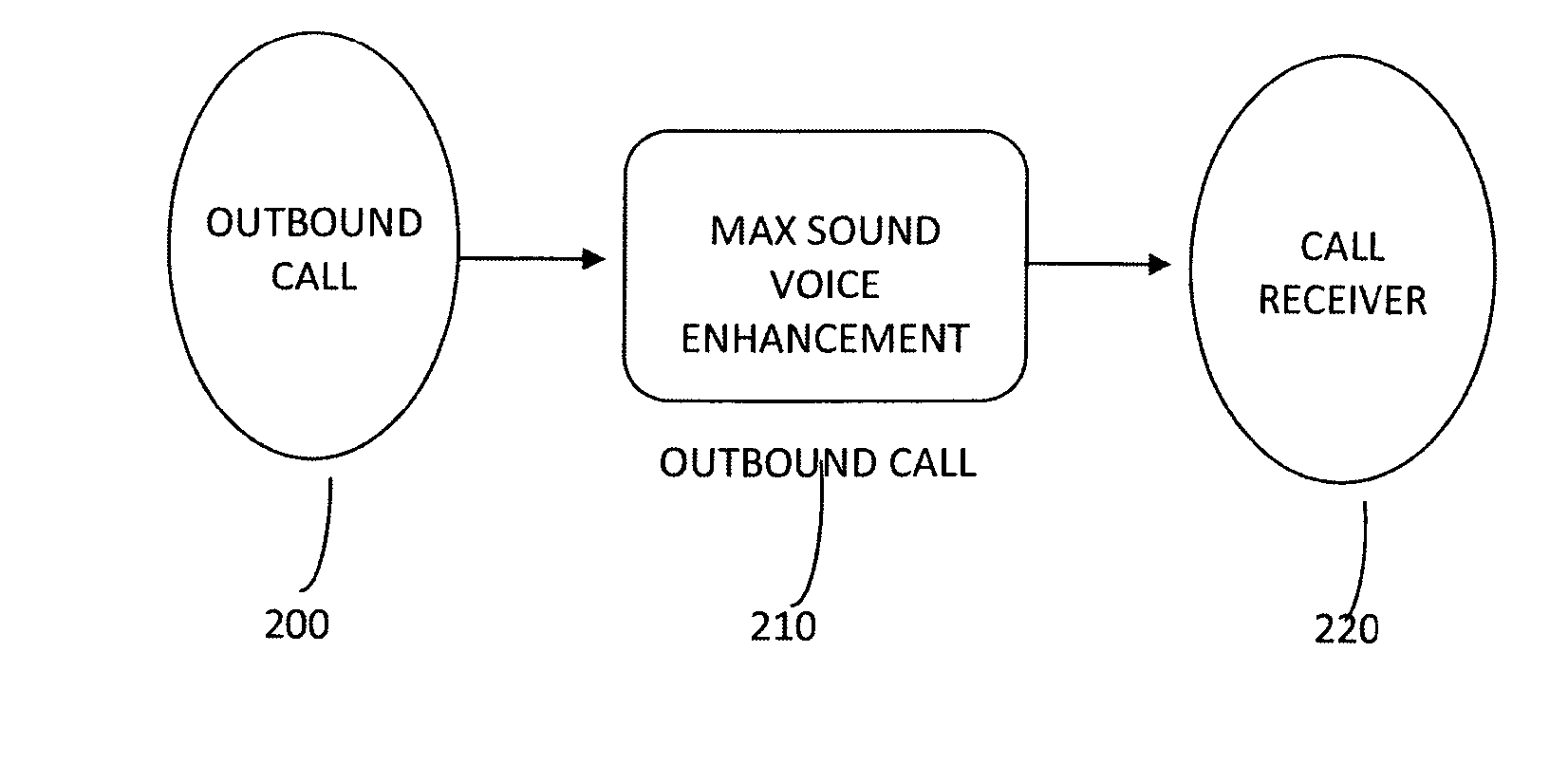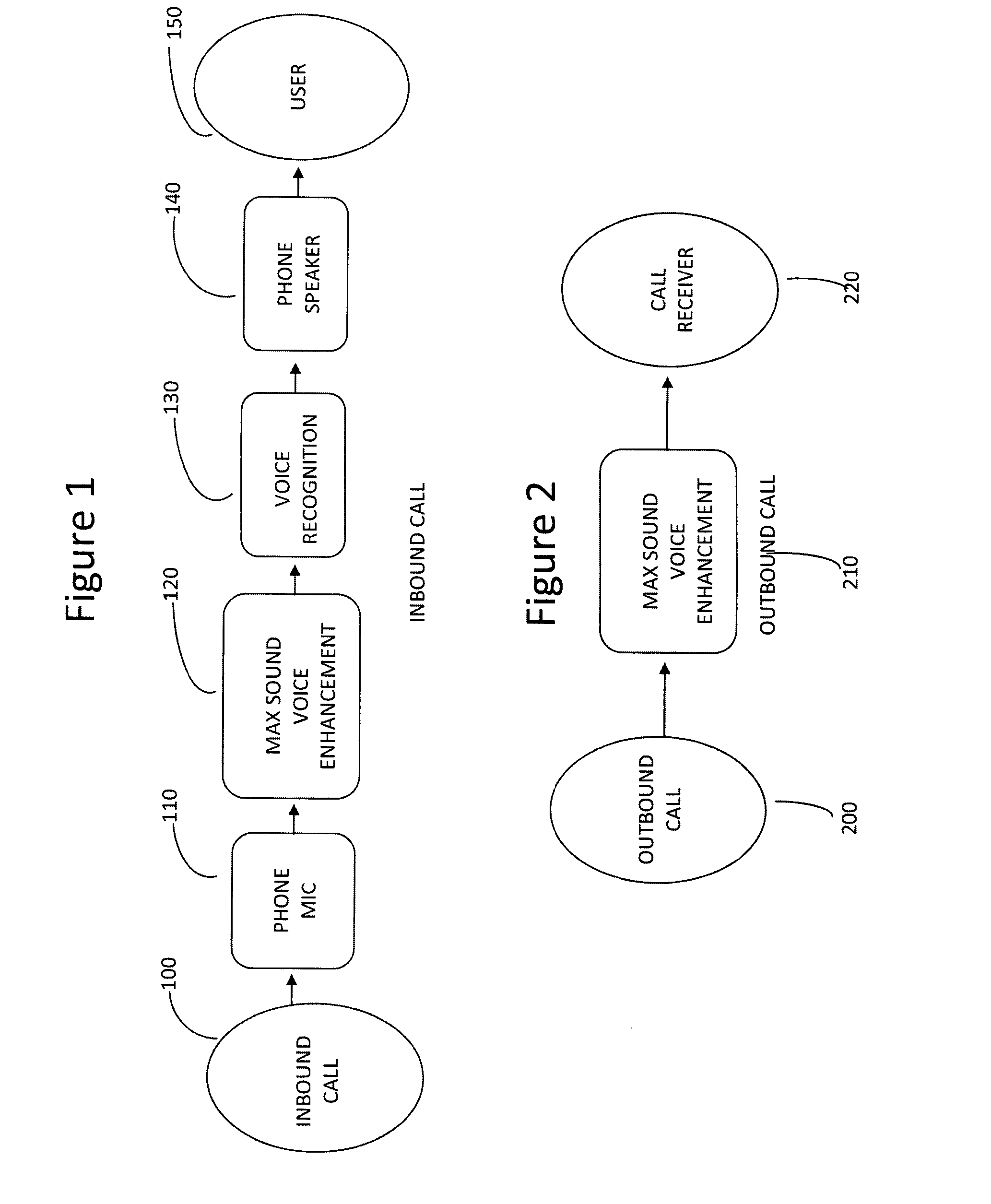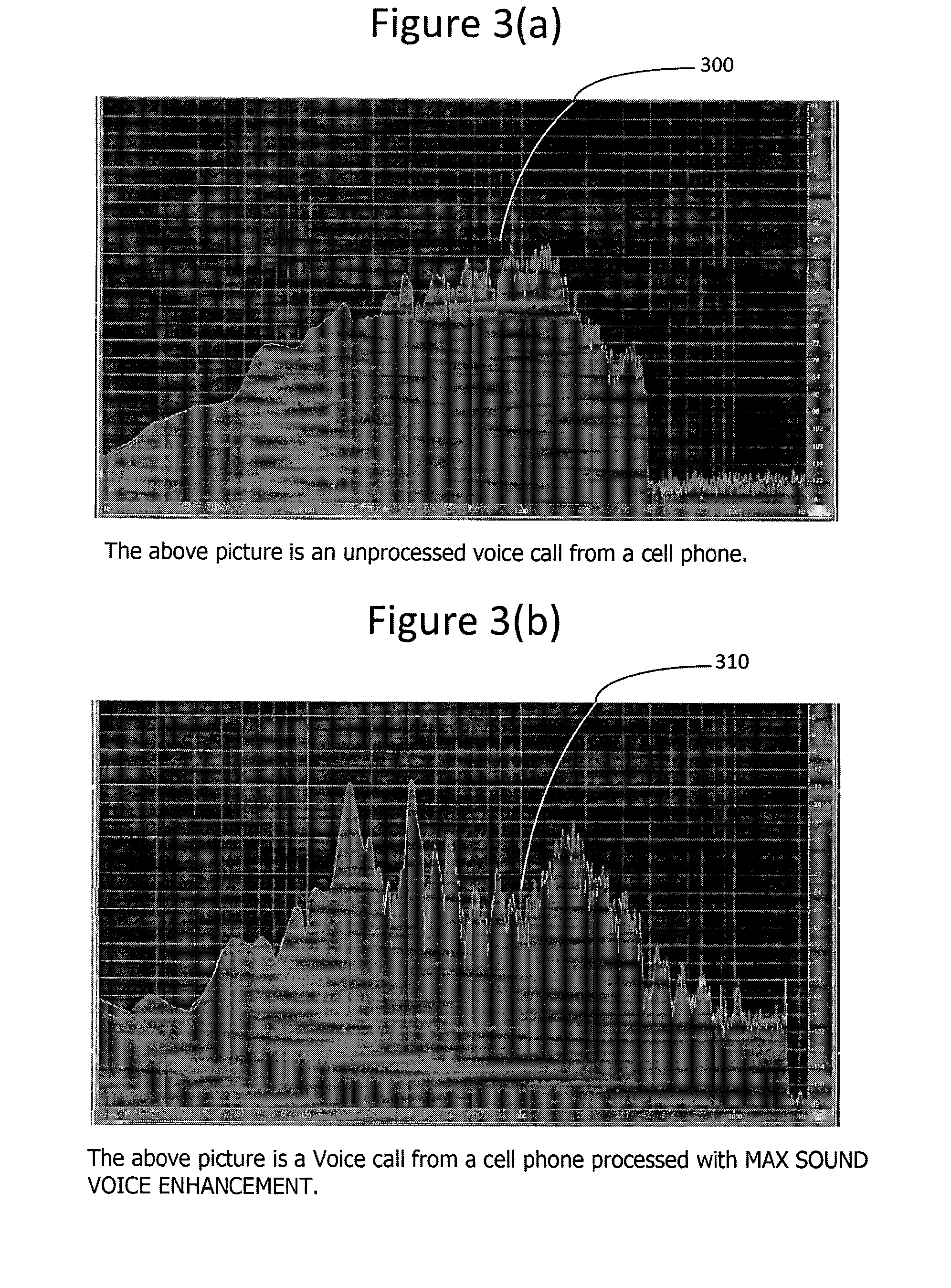Voice recognition enhancement
a voice recognition and enhancement technology, applied in the field of voice recognition enhancement, can solve the problems of loss of voice quality, limited transmission range of voice signals, and wide width of voice signals, so as to improve the “source”, improve the intelligibility of audio, and clear and easy to discern voice users
- Summary
- Abstract
- Description
- Claims
- Application Information
AI Technical Summary
Benefits of technology
Problems solved by technology
Method used
Image
Examples
Embodiment Construction
)
[0019]An embodiment of the operation of the Voice Recognition Enhancement Method and system of the present invention is depicted in the block diagram of FIG. 1. Preferably, the inventive VRE process is performed by a single processor module identified by reference numeral 120 in the system shown in the block diagram of FIG. 1 corresponding to an incoming call, and reference numeral 210 in the outbound set up shown in FIG. 2.
[0020]As shown in FIG. 1, inbound call 100 is received by a telephony through a microphone 110. Signal from the microphone 110 is fed to the inventive VRE processor, where the sound signal is processed for enhancement. Voice enhancement at this step is accomplished by restoring (resynthesizing) the inbound voice audio to a much greater harmonic and dynamic range than that possessed by the original voice signal. For example, an incoming voice signal with a 16 bit audio range can be expanded into a 20 bit range. Advantageously, utilizing this process requires no c...
PUM
 Login to View More
Login to View More Abstract
Description
Claims
Application Information
 Login to View More
Login to View More - R&D
- Intellectual Property
- Life Sciences
- Materials
- Tech Scout
- Unparalleled Data Quality
- Higher Quality Content
- 60% Fewer Hallucinations
Browse by: Latest US Patents, China's latest patents, Technical Efficacy Thesaurus, Application Domain, Technology Topic, Popular Technical Reports.
© 2025 PatSnap. All rights reserved.Legal|Privacy policy|Modern Slavery Act Transparency Statement|Sitemap|About US| Contact US: help@patsnap.com



